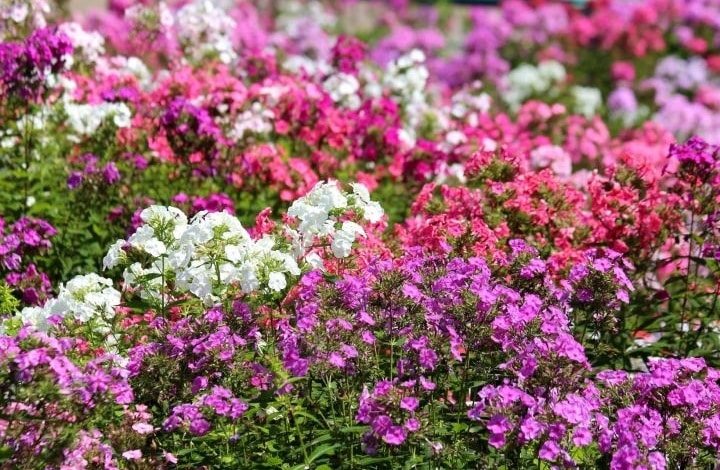Phlox are easy to grown low-maintenance herbaceous plants bearing a profusion of small flowers in a variety of colours, including shades of blue, purple, pink, magenta, red and white, making excellent cut flowers.
Their flowers are usually fragrant that will attract a variety of bees and other pollinating insects into your garden.
There is a wide range, from tall border perennials to creeping phlox or alpine varieties and woodland types, as well as annual varieties that can be grown as bedding plants.
However, Phlox Paniculata is the most commonly grown garden phlox, often known as border phlox which can grow to nearly 2m that typically bears pink flowers.
Largely pest-free and disease-resistant, they last for years in the garden.
Most border phlox grows best in well draining soil in a full sun position, but as they are native to woodland edges they will also do well in partial shade.

They are sensitive to drought, so them keep well watered in hot, dry weather. Other than that they need very little care.
Phlox gradually form large clumps in the garden. To keep your plant growing well and to prevent it from becoming congested, divide it every three or four years, in early spring.
Signs that your phlox needs dividing are fewer flowers and a sparse centre.
Dead-heading immediately after flowering may result in more phlox flowers produced from side shoots in autumn.
Cut your plant down to ground level in autumn or winter, once the foliage has died back.
Phlox don’t like drought, so if you notice the foliage wilting give it a water and it should perk up. In hot weather, water in the morning, making sure plenty of water reaches the roots.
Powdery mildew can be a problem in hot, humid weather, especially if your plant is growing in partial shade. If this is a problem in your garden, improve air circulation by thinning the plants in early spring.





